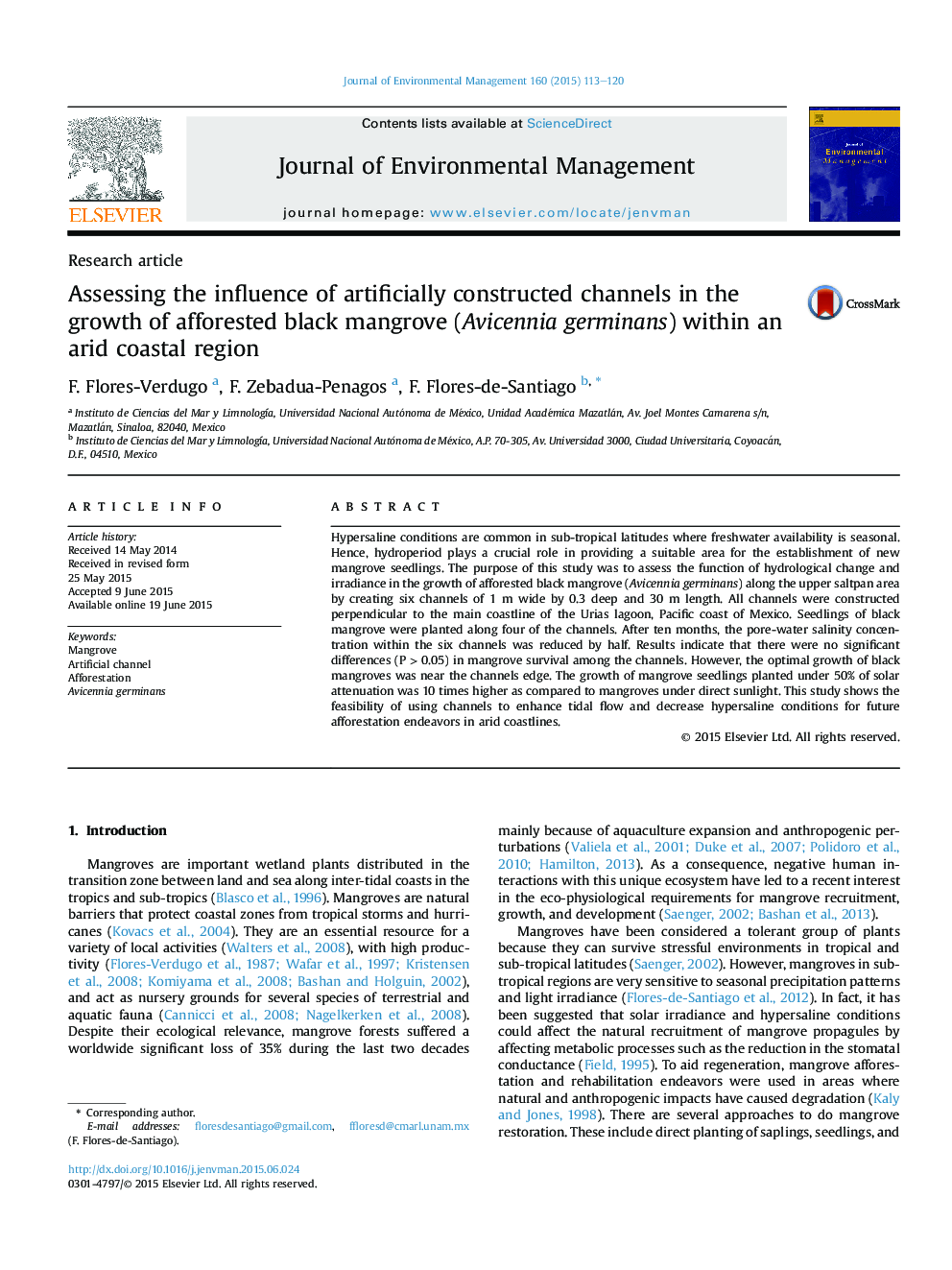| Article ID | Journal | Published Year | Pages | File Type |
|---|---|---|---|---|
| 7481717 | Journal of Environmental Management | 2015 | 8 Pages |
Abstract
Hypersaline conditions are common in sub-tropical latitudes where freshwater availability is seasonal. Hence, hydroperiod plays a crucial role in providing a suitable area for the establishment of new mangrove seedlings. The purpose of this study was to assess the function of hydrological change and irradiance in the growth of afforested black mangrove (Avicennia germinans) along the upper saltpan area by creating six channels of 1Â m wide by 0.3 deep and 30Â m length. All channels were constructed perpendicular to the main coastline of the Urias lagoon, Pacific coast of Mexico. Seedlings of black mangrove were planted along four of the channels. After ten months, the pore-water salinity concentration within the six channels was reduced by half. Results indicate that there were no significant differences (PÂ >Â 0.05) in mangrove survival among the channels. However, the optimal growth of black mangroves was near the channels edge. The growth of mangrove seedlings planted under 50% of solar attenuation was 10 times higher as compared to mangroves under direct sunlight. This study shows the feasibility of using channels to enhance tidal flow and decrease hypersaline conditions for future afforestation endeavors in arid coastlines.
Related Topics
Physical Sciences and Engineering
Energy
Renewable Energy, Sustainability and the Environment
Authors
F. Flores-Verdugo, F. Zebadua-Penagos, F. Flores-de-Santiago,
